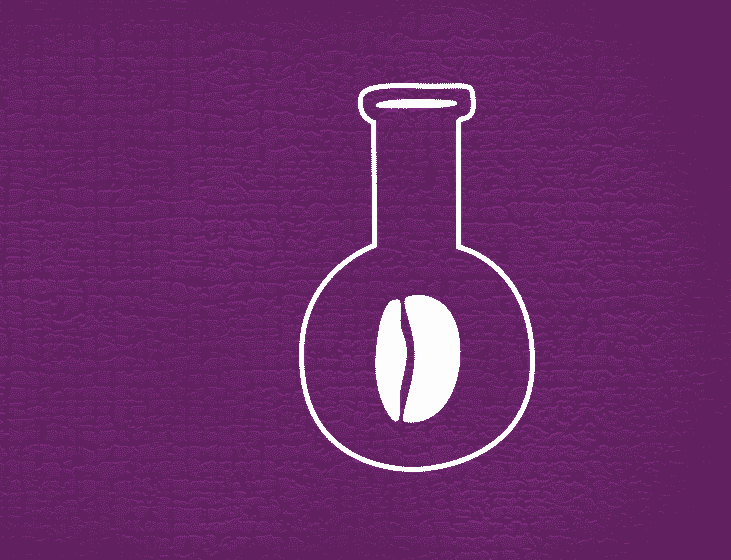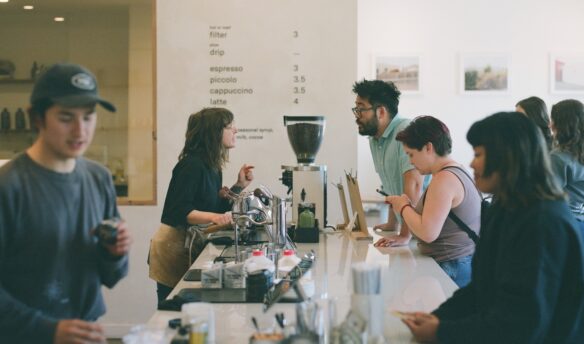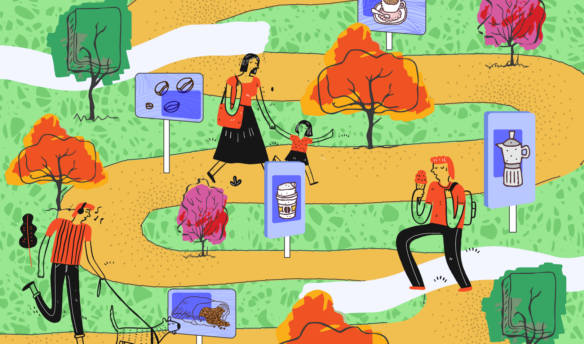[C]offee’s flavor involves over 1,000 chemical compounds. The primary tastes perceived on the tongue are important, but the hundreds of aromatics in coffee are smelled rather than tasted.
Sweetness comes from sugars, which mostly caramelize during roasting to produce toastiness and the dark tone of caramel. This is complemented by caramel-like aromatics.
Bitterness is crucial: without bitterness, coffee would be unrecognizable. Bitterness helps balance the acidity in coffee. Aromatics can, in turn, balance the bitterness. The balance of complementary tastes is key to the best coffee experience. Caffeine provides about 10 percent of the bitterness of coffee. Trigonelline (aka niacin) is bitter, but roasting converts most of it to pyridines, which taste warm and roasty.
Acidity is complex. Fruit acids contribute fine acidity admired at the cupping table. Citric acid is strong, but malic (also found in apples) and tartaric (found in grapes) are nuanced. An acid profile is considered more complex with a balance of these, typical of beans grown at high altitudes.
Chlorogenic acids (CGAs) degenerate in roasting into caffeic and quinic acids, and phenols. CGAs are perceived as more bitter; quinic acid is sour and bitter.
Aromatic acids, including lactic and acetic acids, can be smelled as well as tasted. Some develop when the fruit is separated from the seed, others during roasting as sugars caramelize. A little is pleasurable, more becomes winy, while too much creates the defect called ferment.
Inorganic acids include phosphoric acid, a strong acid that acts with the other acids and salts to give a pleasant, lingering note.
Aromatics make the aroma and are caused in part by Maillard reactions, which occur when a sugar joins chemically with an amino acid (the building blocks of protein).
Mercaptans, produced in the Maillard reaction, are a family of volatiles with a high concentration of sulfur.
Thiophenes have a meaty aroma from Maillard reactions between sulfurous amino acids and sugars.
Furans are the most abundant class of aromatics in coffee, and contribute caramel aromas from the sugars broken down by the heat of roasting.
Pyrazines are next most abundant, with roasty, walnuty, or toasty aromas. They can be smelled even in small amounts, and so contribute much to the aroma. One pyrazine, which gives an earthy aroma, is also a flavor constituent in bell peppers.
Phenols are also important in the aroma of single-malt Scotch whiskies from Islay, associated with their seaweedy character.
Pyrroles give sweet odors of caramel, or even mushrooms.
—James di Properzio is a freelance writer based in Medford, Oregon.
















